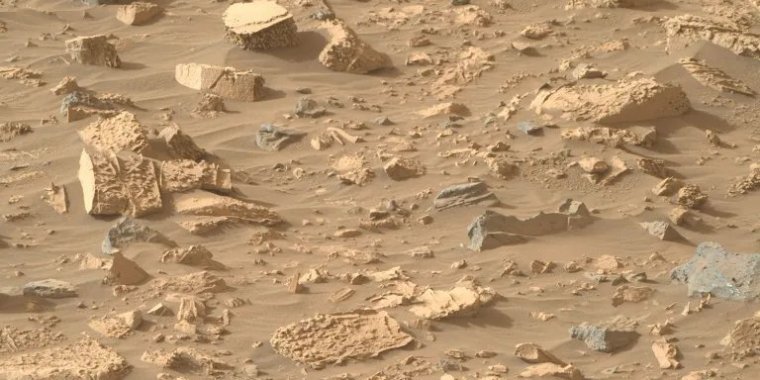| News / Space News |
Perseverance Finds Popcorn on Planet Mars
After months of driving, Perseverance has finally arrived at ‘Bright Angel’, discovering oddly textured rock unlike any the rover has seen before.

Mars Perseverance Sol 1175 - Right Mastcam-Z Camera: A jumbled field of light toned rocks with unusual ‘popcorn’-like textures and abundant mineral veins. NASA's Mars Perseverance rover acquired this image using its Right Mastcam-Z camera. Mastcam-Z is a pair of cameras located high on the rover's mast. This image was acquired on June 10, 2024 (Sol 1175) at the local mean solar time of 14:04:57. Photo: NASA/JPL-Caltech/ASU
Perseverance arrived at the base of this outcrop on sol 1175, and geologists on the science team were mesmerized by the strange textures of the light toned rocks found there.
These rocks are filled with sharp ridges that resemble the mineral veins found at the base of the fan, but there appears to be more of them here.
Additionally, some rocks are densely packed with small spheres, and we’ve jokingly referred to this as a ‘popcorn’-like texture. Together, these features suggest that groundwater flowed through these rocks after they were laid down.
Next, Perseverance will gradually ascend up the rock exposure, taking measurements as it goes.
Over the weekend, the abrasion tool will be used to take a close-up look and acquire detailed chemical information using the instruments on the rover’s arm.
With this data in hand, the team will decide whether or not to sample.
Once our exploration at ‘Bright Angel’ is complete, we will drive south back across Neretva Vallis and explore a site called ‘Serpentine Rapids’. (NASA)
YOU MAY ALSO LIKE





